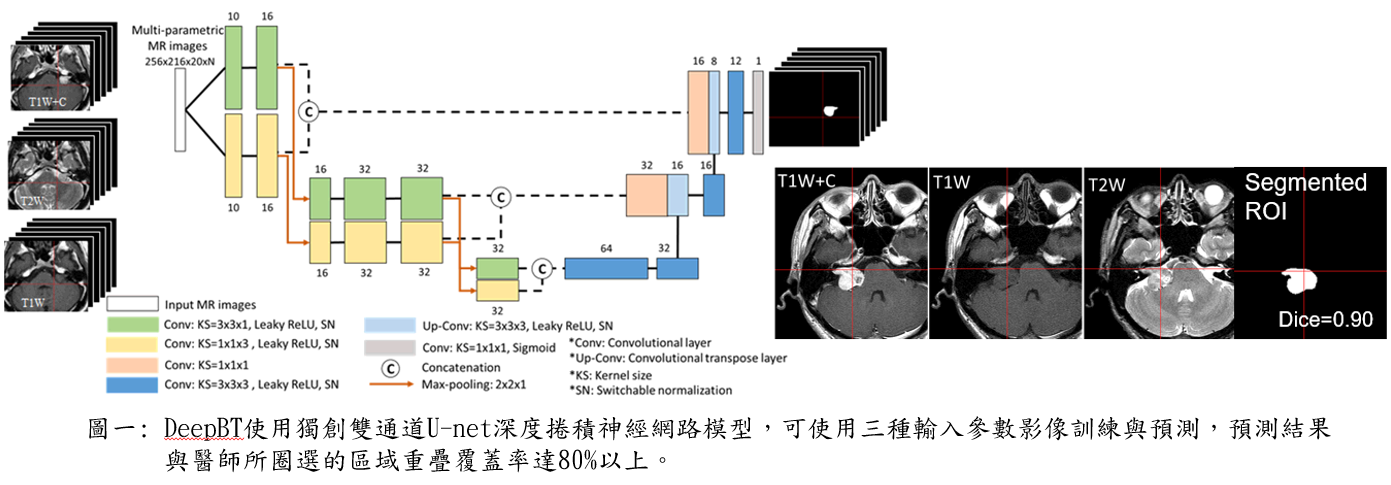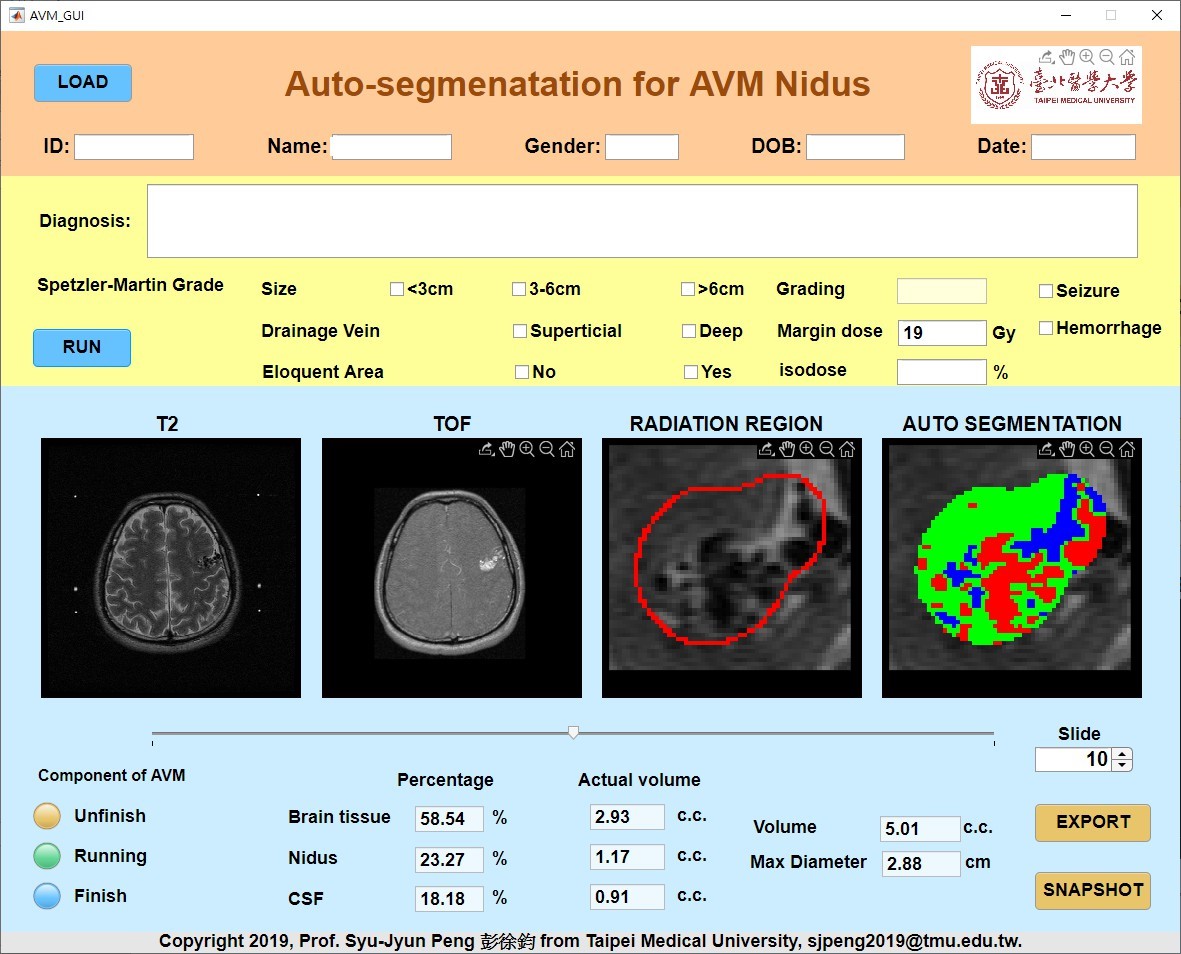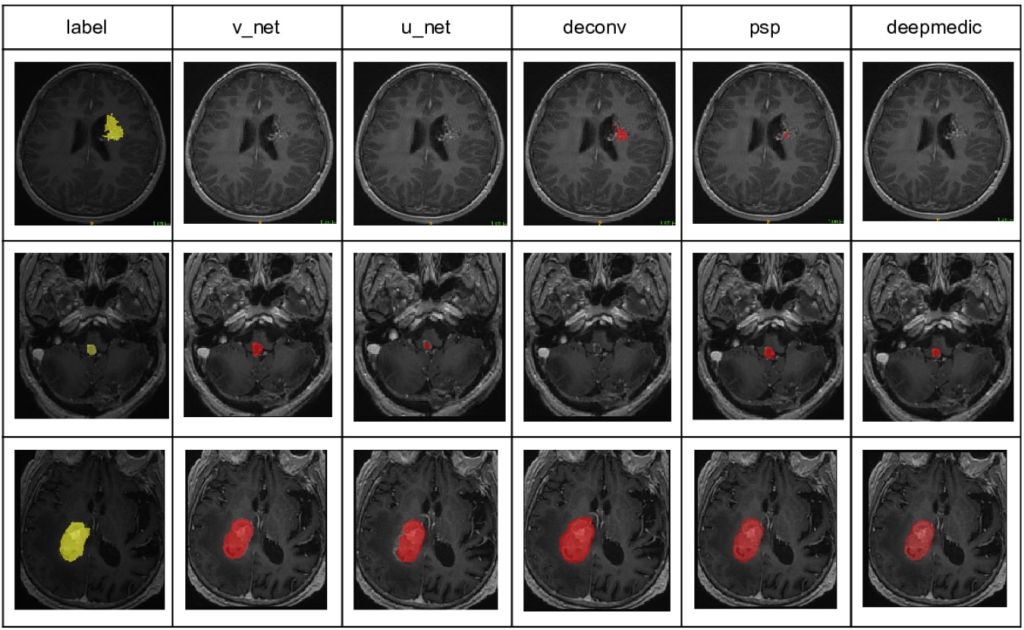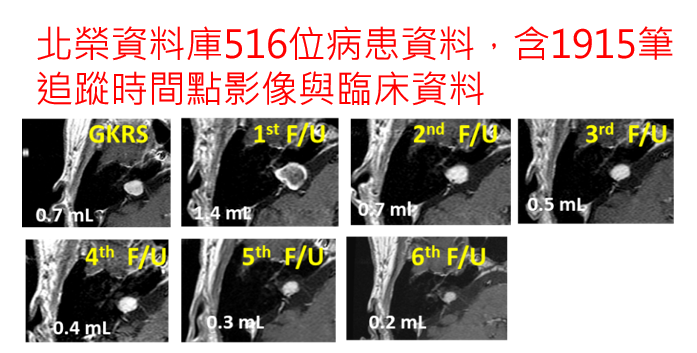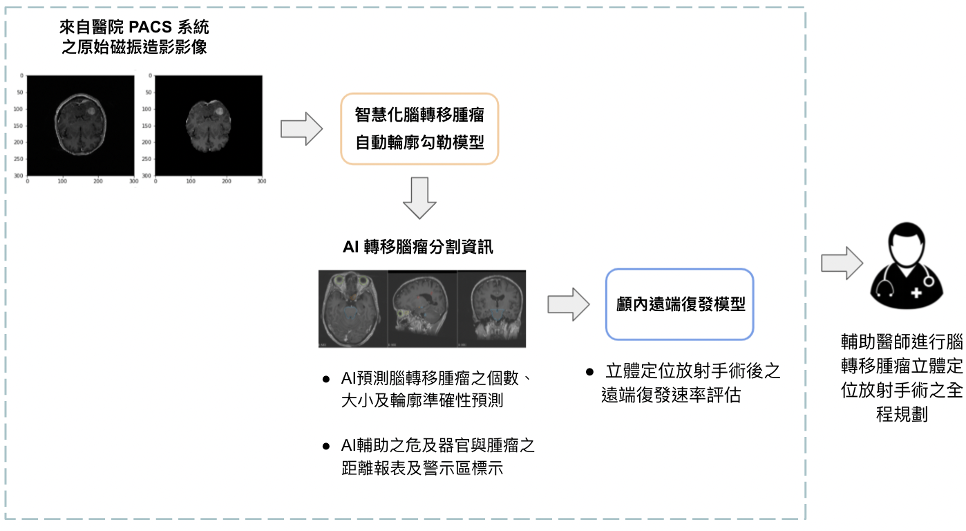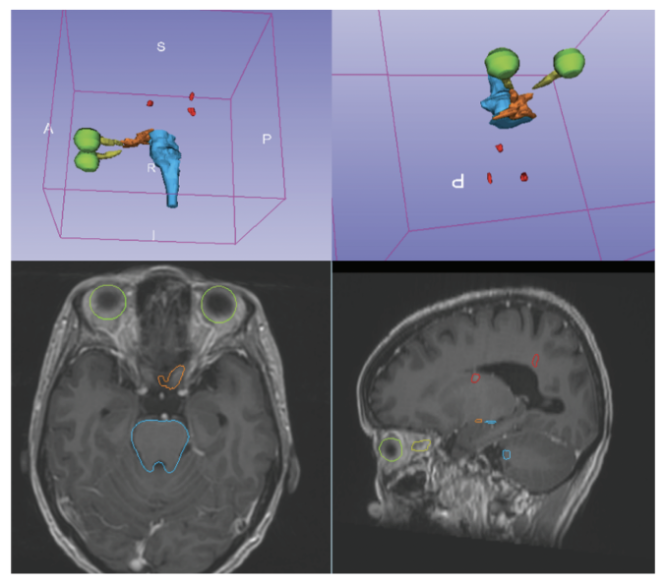| Technical Name | 個人化精準腫瘤治療顧問-腦轉移腫瘤 | ||
|---|---|---|---|
| Project Operator | National Taiwan University | ||
| Project Host | 王偉仲 | ||
| Summary | PCA-BM includes two models: “Automatic BMs Segmentation AI Model”" Distant Brain Failure Prediction Model". The former one uses C2FNAS (coarse to fine network architecture search) to detect the location, size,number of brain metastases. The latter uses radiomics to extract numerous radiographic featuresemploys machine learning methods such as XGBoost to establish a prognostic model of brain metastases. PCA-BM provides more precision treatment decisions for patientsimproves personalizedaccurate overall stereotactic radiosurgery planning. |
||
| Scientific Breakthrough | PCA-BM implements AI technology in clinical applications. In addition to the deep learning technology used in most tumor segmentation models, it also includes an innovative automatic labeling system for brain metastasessurrounding critical organs. The vital organs are outlined together to assist doctors in making more accurate interpretationstreatment decisions. In addition, it provides side-effect risk assessment of stereotactic radiosurgeryrelated prognosis prediction, which has made |
||
| Industrial Applicability | The target audience of PCA-BM is physical examination centersradiology departments at healthcare facilities. By integrating softwarehardware, the diagnosis time can be shortened due to the prompt interpretation of MRI,the postoperative recovery can be predicted. It can also help to formulate a personalized treatment plan to improve the efficiencyquality of treatment. PCA-BM can also be integrated with telemedicine through remote devices, so that interpretation results can be provided in various medical domains timely,accelerate the diagnosisreferral process. |
||
| Matching Needs | 天使投資人、策略合作夥伴 |
||
| Keyword | Precision cancer medicine advisor Brain metastases Distant brain failure Magnetic resonance imaging Tumor detection and segmentation Prognosis prediction Radiomics Coarse-to-fine neural architecture search (C2FNAS) Machine learning Hybrid boundary-focal dice loss | ||
- mtpan@g.ntu.edu.tw
other people also saw

